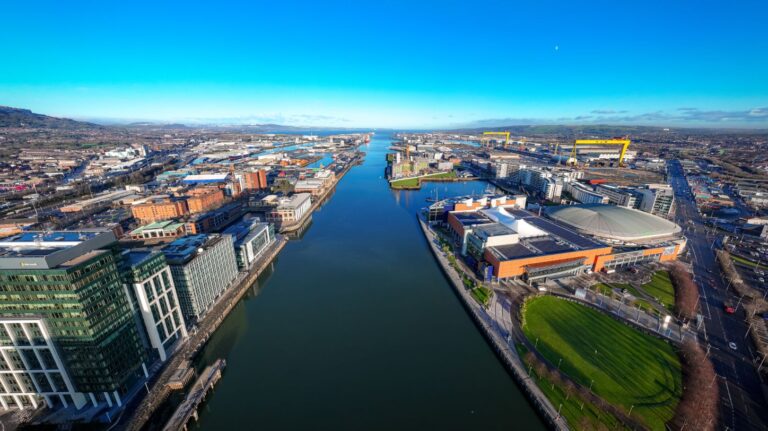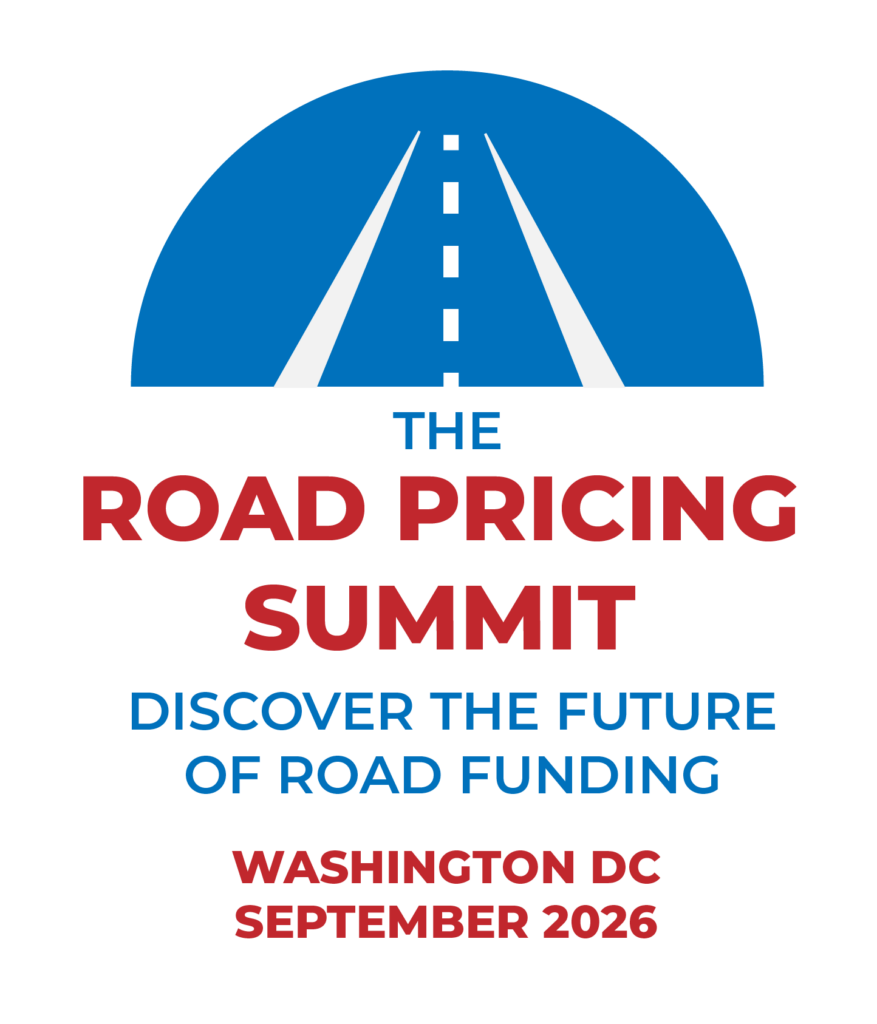Belfast Harbour’s Harlander project is not only introducing Northern Ireland’s first autonomous shuttle service – it’s laying the groundwork for greener, smarter and scalable transport at UK ports and beyond.
Belfast Harbour, a pivotal transport hub handling more than 24 million tonnes of cargo annually – accounting for 70% of Northern Ireland’s seaborne trade – has launched the Harlander project, Northern Ireland’s first self-driving shuttle initiative. This £11m scheme, co-funded by Innovate UK and a consortium of industry partners, is designed to enhance connectivity, reduce congestion and drive forward decarbonisation efforts within the 2,000-acre Harbour Estate. The project will see a nine-seater electric autonomous shuttle operate along a defined route from Titanic Quarter railway station to Catalyst, enabling seamless last-mile transport to key destinations including Titanic Belfast, Catalyst and Belfast Metropolitan College. Developed in collaboration with partners eVersum, Oxa, Angoka, BT and HORIBA MIRA, Harlander is more than a novelty – it’s a strategic mobility intervention that supports both operational efficiency and environmental objectives.
As part of Belfast Harbour’s broader ESG strategy, Harlander contributes directly to the port’s ambition
to become the world’s best regional port by transitioning to net zero and embracing technological innovation. The autonomous shuttle is fully electric and designed to reduce the Harbour Estate’s transport-related emissions – with learnings expected to inform future deployments of low- or zero-emission vehicle fleets, both passenger and freight. The shuttle is also equipped with step-free access, visual and audio information systems and onboard sensors to enhance safety and accessibility – features critical to its role in inclusive mobility provision.
FAST FACT: The UK’s first self-driving bus launched in Edinburgh in 2023 through £81m in joint government and industry funding. Source: Gov.UK
Indeed, the long-term vision for Harlander extends beyond passenger services. The connected and autonomous technology being trialled could later be adapted for logistical use cases, such as automated movement of goods across the port’s container terminals and industrial zones. This flexible deployment model reflects the growing interest in using autonomous vehicles not just for urban transport, but also for boosting efficiency in high-throughput freight environments. Moreover, the initiative places Belfast at the forefront of the UK’s connected and automated mobility (CAM) agenda. Aligned with the UK government’s Connected and Automated Mobility 2025 strategy, Harlander offers a replicable framework for other UK port cities seeking to combine autonomy, sustainability and multimodal integration in complex, high-footfall environments. Data from the trial will also support real-time operational insights, contributing to future digital twin models and Belfast Harbour’s evolving smart infrastructure architecture. Leading the charge is Mike Dawson, Belfast Harbour’s director of people and digital transformation. He recently spoke with CiTTi Magazine about the challenges and anticipated benefits of implementing connected autonomous mobility within the Harbour Estate.

What are you trying to accomplish at Belfast Harbour and how does it differ from other transport hubs?
Belfast Harbour is a unique organisation. It represents 22% of Belfast’s city core and operates as a trust port – a commercial entity that reinvests all profits back into the estate for the benefit of tenants, visitors and workers. It’s a microcosm of a city. We’re championing the Harlander project, our first foray into autonomous vehicles. We have significant development plans across the estate, but existing transport links offer poor connectivity to key arterial routes. Autonomy presents a cost-effective future solution. Harlander is the first step in delivering a true modal shift. For instance, Queen’s Island – the location for this service – has only one entry and exit point, creating significant congestion.
Belfast is not a large city, but its congestion is among the worst in the UK. We’re looking at how autonomy can alleviate this and be extended across the estate, which includes public spaces, sports facilities, educational institutions, museums and innovation parks. We also operate a commercial port. So, we’re exploring how these learnings can benefit key stakeholders such as Stena Line and Manfreight.
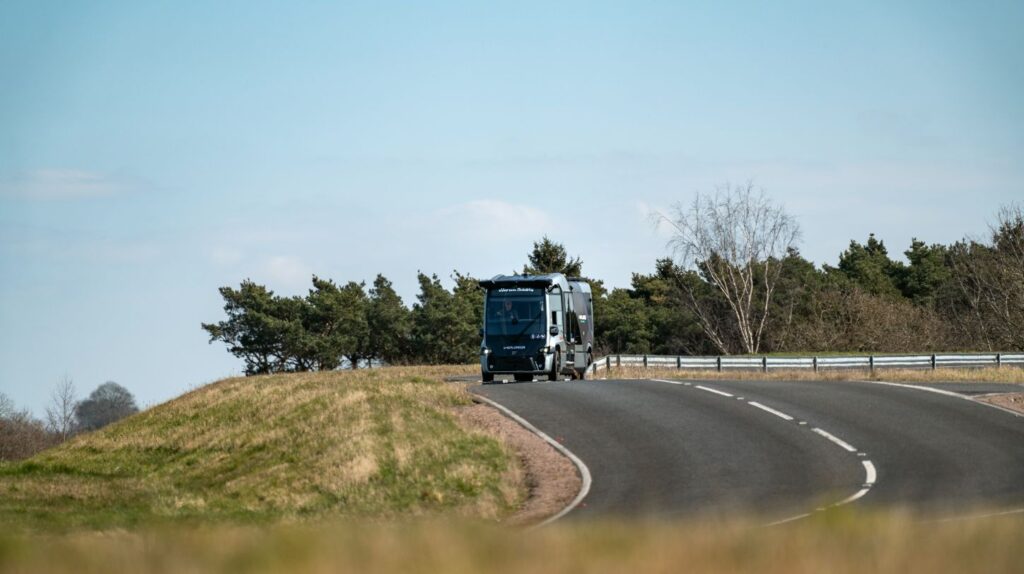
As a multimodal port, what challenges do you face implementing connected autonomous mobility at scale?
The main challenge is cost. The technology is not yet mature enough for wide-scale deployment, and to make it commercially viable, removing the driver is essential. But there’s potential to position Belfast Harbour as a verification and validation environment. This could support Belfast City’s broader transport strategy, which includes two Glider routes running east-west and plans for a north-south extension. Today, the issue is last-mile connectivity to these corridors. Autonomy could bridge that gap – especially amid driver shortages. That’s the strength of the institution – our ability to pioneer and share practical solutions.
Who stands to benefit most from these initiatives?
There’s a wide beneficiary base. Today, it’s tenants and visitors – including 300,000 annual cruise passengers. If they’re in port for a day, they could use an autonomous shuttle to reach the Titanic Museum. Future phases could include airport connections. Autonomy won’t be the sole solution, but it will be one of several options. Many residents in the area don’t own cars, so we’re looking at reducing mobility barriers – especially for those in affordable housing. We’ll offer the service free initially to encourage uptake and assess usage patterns.
FAST FACT: Labour costs constituted 51.9% of UK bus operating expenses outside London in 2023. Source: Confederation of Passenger Transport
Have the benefits of the scheme started to materialise?
Sustainability is a major focus. We launched our new strategy on 21 January 2025, with a strong emphasis on achieving net zero. We’ve made significant progress on Scope 1 emissions and are close to completing Scope 2. Scope 3 presents a tougher challenge, particularly when working with tenants who import carbon-intensive goods such as coal. On the mobility side, vehicle electrification is key – though high costs remain a barrier. Retrofitting is currently a more feasible approach. We’re also using HVO fuels for our pilot boats and cranes. Every opportunity is being explored to reduce emissions sensibly and affordably.
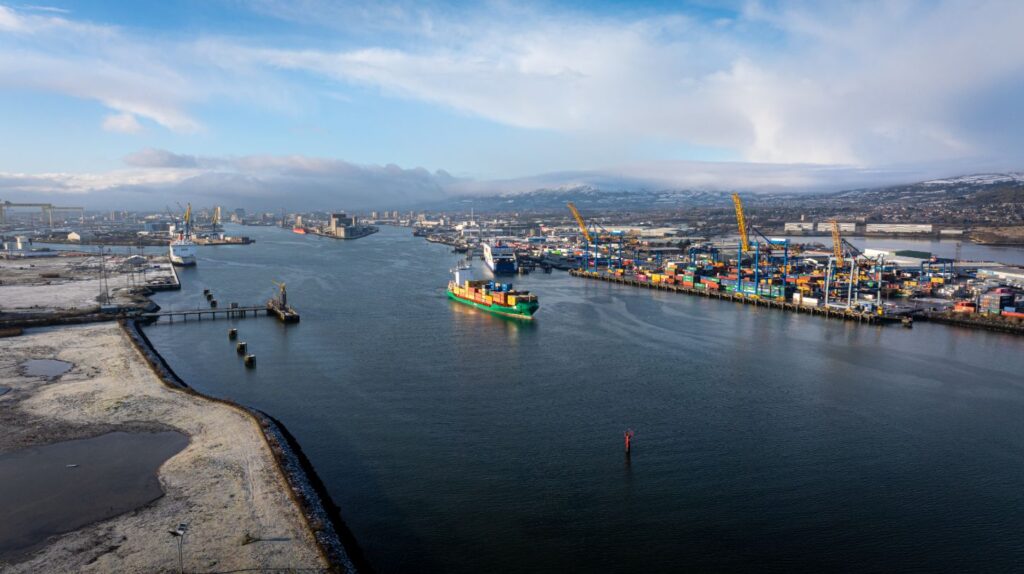
What is the timescale for completing these schemes?
We initially targeted 2030 for Scope 2 completion, but now believe 2026 or 2027 is achievable. We’ve faced challenges, but with a new sustainability team in place, we’re making steady progress. For example, we’re reintroducing oysters into the bay to improve water quality. These small actions resonate with staff, visitors and schoolchildren, reinforcing the message that we’re more than just a commercial port. We published our first ESG report last year and will release our second this year. It’s a clear demonstration of transparency – showing what we committed to, what we’ve achieved, what we haven’t and how we plan to improve.

“Belfast is not a large city, but its congestion is among the worst in the UK. We’re looking at how autonomy can alleviate this and be extended across the estate, which includes public spaces” – Mike Dawson, director of people and digital transformation, Belfast Harbour
Is the scheme having a measurable impact on air quality
Air quality is complex. We monitor it using our own sensor network, supplemented by data from the city. However, we can only influence what happens within our estate. The city’s broader progress has been slower than hoped, but we have a robust data architecture in place and a comprehensive AI roadmap to help identify practical interventions. We’re collaborating closely with city officials and academic institutions to align our efforts and extend our impact. It starts with measurement and understanding, then acting on what we can influence – and seeking help where needed.
Do you see this as a pilot or a permanent shift in how Belfast Harbour operates?
This is not a pilot or a case study. It’s solving real problems. We’re not deploying technology for its own sake. For instance, simply building more bus lanes won’t deliver modal shift – people won’t abandon cars just to sit in traffic on a bus. Unlike London, Belfast lacks a comprehensive underground network. So, we need creative solutions to encourage public transport use. Autonomy can integrate with existing services and improve accessibility. From a port operations perspective, it’s about land use and throughput efficiency. Automated tractors could move containers without needing a human driver.
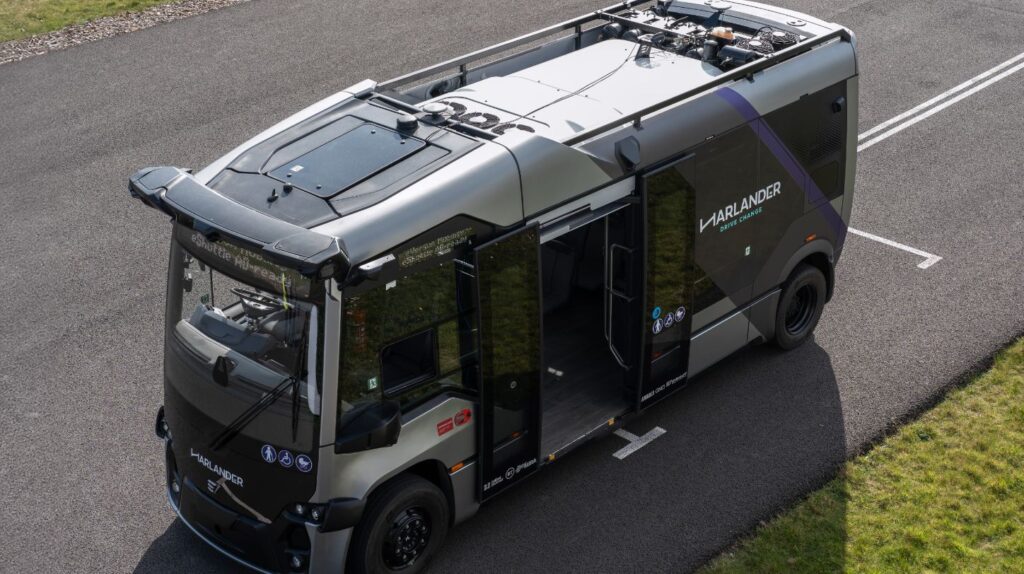
This is embedded in our strategy. If we don’t deliver by 2029, there’ll be an empty chair where I’m sitting now. Alongside this shift, we’re also exploring upskilling initiatives for staff to support CAM operations, focusing on digital system management, AI analytics and safety assurance – helping ensure the workforce evolves with the technology.
What’s next for Harlander and Belfast CAM?
- Potential expansion to Belfast City Airport via multimodal integration
- Exploration of autonomous logistics vehicles for port container handling
- Shared learnings with other UK ports and innovation districts
- Future collaboration with universities for AI, robotics and mobility research
- Open innovation calls for SMEs to develop CAM-related services
Why it matters – Harlander in the national CAM landscape
- Aligns with UK government’s Connected and Automated Mobility 2025 strategy
- One of the first CAM services at a UK port
- Showcases how CAM can bridge gaps in multimodal transport
- Potential blueprint for other port cities such
as Southampton, Liverpool and Portsmouth - Supports UK’s net-zero goals and maritime decarbonisation strategy
This article was originally published in the May 2025 issue of CiTTi Magazine.
Achievements and innovations in river services will be recognised and celebrated at the fourth annual CiTTi Awards on 25 November 2025 at De Vere Grand Connaught Rooms in London. Visit www.cittiawards.co.uk to learn more about this unmissable event for the UK’s transportation sector!

